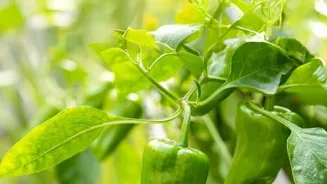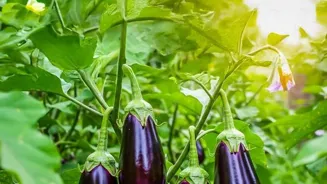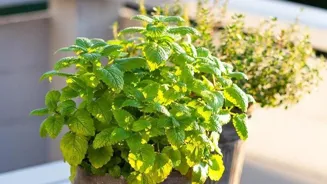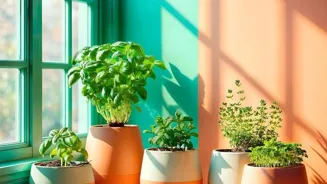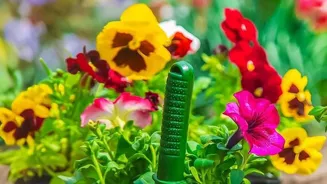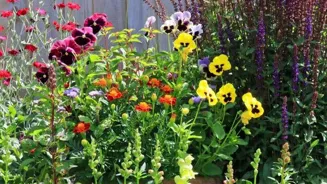Discover the joy of home gardening! Connect with nature, de-stress, and grow your veggies with these 10 tips. Read more!
In a world where everything seems to be moving so fast, and urban life often disconnects
us from nature, there's a simple, yet deeply rewarding activity that's making a comeback – home gardening. Imagine fresh, crisp vegetables gracing your table, all grown with your own two hands.
Sounds delightful, doesn't it? Gardening is not just a hobby; it's a way to connect with nature, de-stress, and enjoy the fruits (and vegetables!) of your labor. Plus, you know exactly what's going into your food – no unwanted pesticides or hidden ingredients.
Let's explore ten fantastic tips to help you embark on your own vegetable gardening journey right here in India! It's easier than you think, and the rewards are endless.
Choosing the Right Spot & Soil
Your garden's success largely depends on its location. Vegetables need ample sunlight – at least 6-8 hours a day. So, observe your balcony, terrace, or backyard throughout the day to identify the sunniest spot. Next, the soil! Good soil is crucial for healthy growth.
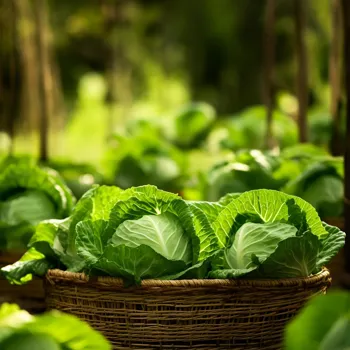
Indian soils can vary greatly, from red soil to black cotton soil. Ideally, you want well-draining soil that's rich in organic matter. You can either buy ready-made potting mix from a nursery or improve your existing soil by adding compost, manure, or leaf mould.
This nourishes the soil with the goodness it needs. Consider raised beds or containers if your ground soil is poor or rocky.
Selecting Your Veggies Wisely
Now for the fun part – choosing what to grow! Start with vegetables that are easy to grow in the Indian climate, especially for beginners . These include tomatoes, chillies, brinjal (eggplant), okra (bhindi), spinach (palak), and coriander (dhania).
These are relatively low-maintenance and can tolerate varying conditions. Consider the season too. Leafy greens like spinach and methi thrive in cooler months, while tomatoes and chillies love the warmth of summer. Also think about the space you have.
If you have limited space, opt for compact varieties or grow vegetables in containers. Planning is important for success in gardening.
Sowing Seeds or Planting Seedlings
You have two options for starting your vegetable plants: sowing seeds directly into the soil or transplanting seedlings. Direct sowing is suitable for vegetables like beans, okra, and spinach. Prepare the soil, make shallow furrows, sow the seeds, and cover them gently.

Keep the soil moist until the seeds germinate. For tomatoes, chillies, and brinjal, it's often easier to start with seedlings. You can buy them from a nursery or start your own indoors in small trays or pots. Once the seedlings have a few leaves, they can be transplanted into your garden.
Always water them well after transplanting.
Watering with Care
Water is life for your plants, but overwatering can be just as harmful as underwatering. The key is to water deeply and less frequently, allowing the soil to dry out slightly between waterings. Water in the morning to give the plants time to dry before nightfall, which helps prevent fungal diseases.
Use a watering can or a hose with a gentle spray nozzle to avoid damaging the plants. Also, consider the weather. You'll need to water more frequently during hot, dry periods. Observe your plants – drooping leaves are a sign of thirst.
Providing Nutrients
Just like humans, plants need nutrients to grow and thrive. Regular feeding will ensure healthy growth and a bountiful harvest. You can use organic fertilizers like compost, vermicompost, or cow manure. These are slow-release fertilizers that provide a steady supply of nutrients to the plants.
You can also use liquid fertilizers like diluted seaweed extract or fish emulsion. Apply fertilizers according to the instructions on the package. Avoid over-fertilizing, as this can damage the plants. Remember, balanced nutrition is the key to healthy and productive plants.
Pest and Disease Management
Pests and diseases can be a gardener's worst nightmare, but don't worry, there are many natural ways to manage them. Regularly inspect your plants for signs of pests or diseases. Common pests include aphids, whiteflies, and caterpillars.
You can control them by handpicking, spraying with neem oil, or using insecticidal soap. For fungal diseases, ensure good air circulation, avoid overwatering, and spray with a fungicide if necessary. Encourage beneficial insects like ladybugs and lacewings, which prey on pests.
A healthy garden is less susceptible to pests and diseases. Keeping a watchful eye on your plants helps manage the issues.
Weeding Regularly
Weeds compete with your vegetables for water, nutrients, and sunlight. So, it's important to remove them regularly. Hand-pulling is the most effective way to remove weeds. Do it when the soil is moist, as this makes it easier to pull out the entire root.
Mulching around your plants with straw, newspaper, or plastic sheeting can also help suppress weed growth. Weeding is an ongoing task, but it's essential for keeping your garden healthy and productive. Regular weeding saves a lot of time and effort.
Pruning and Training
Some vegetables, like tomatoes and cucumbers, benefit from pruning and training. Pruning involves removing unwanted shoots and leaves to improve air circulation and encourage fruit production. Training involves guiding the plants to grow in a specific direction, often using stakes or trellises.
This helps the plants support their weight and prevents the fruits from touching the ground. Pruning and training can significantly increase your yield and improve the quality of your vegetables. It might be a different approach but it should be a consideration.
Harvesting Your Bounty
The most rewarding part of gardening is harvesting your own vegetables. Pick them when they are ripe and at their peak flavor. Regular harvesting encourages the plants to produce more. For example, tomatoes are best picked when they are fully coloured and slightly soft to the touch.
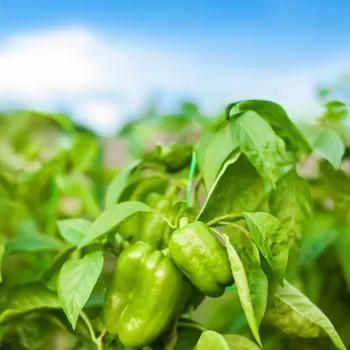
Leafy greens can be harvested as needed. The freshness and flavour of homegrown vegetables are unmatched. Share your harvest with friends and neighbors! It's a great way to spread the joy of gardening.
Learning and Experimenting: Gardening is a continuous learning process. Don't be afraid to experiment with different techniques and varieties. Read books, watch videos, and join online gardening communities to learn from others. Every garden is unique, and what works for one person may not work for another. So, keep observing your plants, adjusting your methods, and most importantly, have fun! Gardening is not just about growing vegetables; it's about connecting with nature, learning new skills, and enjoying the simple pleasures of life. Embrace the journey, and you'll be amazed at what you can grow! Happy gardening!.
Gardening in small spaces is possible too. Vertical gardening techniques, such as using hanging baskets or stacking planters, are ideal for balconies and small patios. These methods allow you to grow more plants in a limited area.
Choose compact varieties of vegetables that don't require a lot of space. Regular pruning and training will also help keep your plants manageable. Even a small garden can provide a surprising amount of fresh produce. Small is not a barrier, be creative and start from there.
Starting small and gradually expanding is a good idea for beginners. Don't try to grow too many different vegetables at once. Focus on a few easy-to-grow varieties that you enjoy eating. As you gain experience, you can experiment with more challenging crops.
Learning from your mistakes and successes is part of the fun of gardening. Enjoy the process and celebrate your small wins along the way. Rome was not built in one day, be persistent and consistent.
AI Generated Content. Glance/InMobi shall have no liability for the content